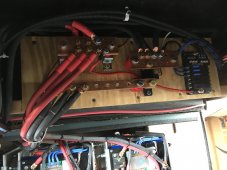Evening all
Wanting to run 2 smart shunts and connect them together via VE direct, is this possible ?
I’m wanting to run the small loads from my battery via BMS and smart shunt to power house lights / fridge etc and a large load from same battery for inverter as a direct connection via Smartshunt
Can these be set up talk to each other so SoC can be accurate over both circuits ?
Thanks
Wanting to run 2 smart shunts and connect them together via VE direct, is this possible ?
I’m wanting to run the small loads from my battery via BMS and smart shunt to power house lights / fridge etc and a large load from same battery for inverter as a direct connection via Smartshunt
Can these be set up talk to each other so SoC can be accurate over both circuits ?
Thanks



